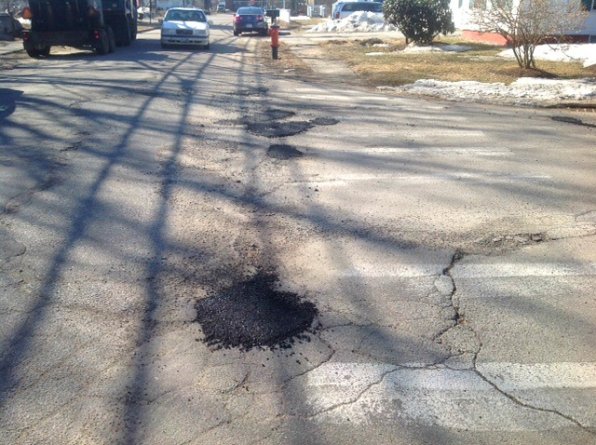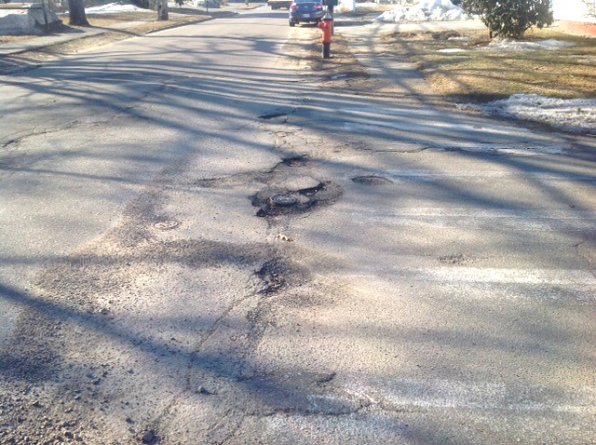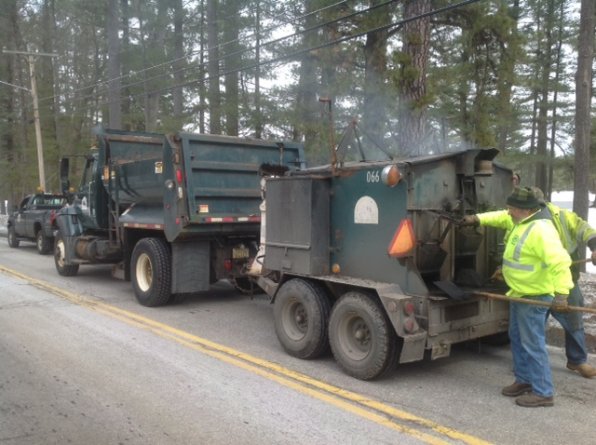There are just certain things that make you think of spring around these parts.
Warmer temperatures, the disappearance of snow piles and brown lawns. But we can’t forget about the constant reminder every time we drive down the road. Yes, we’re talking about potholes, and it seems like every year there’s more and more of those shock killing, alignment changing buggers popping up – or technically down, now that we think of it.
With 220 miles of roads in the city limits, just imagine the man hours it takes to keep them filled. Or better yet, ask one of the General Services crew, who spent many sleepless nights plowing the roads this winter and is now stuck in pothole H-E-Double hockey sticks. But at least they got a break last week when they had to suspend the pothole-filling season for the late winter surprise.
“As soon as the snow stops falling, one of the things we deal with immediately are potholes,” said General Services Director Chip Chesley.
The way potholes come about is from frost heaves. When water underneath the road cannot drain through frozen soil, it freezes and expands upward, creating all those bumps in the road that you try to weave around in an effort to keep your car out of the repair shop.
When the pavement warms up this time of year, the ground thaws and the road contracts back down, which in turn creates cracks in the pavement.
“As the frost is leaving the road below that’s when these things occur,” Chesley said. “It’s just where we live.”
And the cracks you see now not only weaken the road structure, but eventually turn into potholes. Hooray, things to look forward to.
The good news is that if the city’s crew of pothole fillers knows about them, they’re going to drive those big trucks filled with shovels, rakes and a steaming pavement compound and fill them. Since no pothole is created equal, some are a quick fix, while others take a little more time.
“For us, it’s just something we need to go out and attend to,” Chesley said.
They always clean out any debris before packing down the compound to help give it a structural integrity that will hopefully last for a while, but that all depends on the road, it’s age and where it’s located. If the hole is too deep for just the compound, they’ll fill it with gravel so they only need to use three to four inches of the mix.
Chesley said one of the worst roads is Bog Road in Penacook. It not only crosses a swamp, but also has poorly draining soil, which we’re going to go out a limb and say is not a good thing when it comes to preventing giant holes in the road. On the other side of the equation is the Heights. The area has a more sandy base, and that allows for better drainage so the pothole ratio goes down.
“It all depends on what’s the natural geography of the region,” Chesley said.
As of last week, the three city crews had filled more than 3,400 potholes this season and it’s safe to say they’ll be out there for a while.
“I’d say it’s been about average,” said Highways and Utilities Superintendent Jim Major. “It always seems to be more when you’re in the middle of it and we look at spring time as the worst time.”
If they see a pothole, they’ll pull over and fix it. But it’s next to impossible to know about all the potholes in the city, and that’s where y’all come in. If you see a hole in the road, first try to avoid it, and then drive home and either give General Services a call during business hours (8 a.m. to 5 p.m., Monday through Friday) or fill out a request through the city’s Request Tracker page (concordnh.gov/requesttracker).
“That’s a good way to reach us ’cause it’s convenient for the homeowner,” Chesley said. “We try to fill them as soon as we can.”
Pothole filling is not just a spring thing either.
“We fill them any time, even in the winter,” Major said.











